Io Unsupportedoperation Not Readable
Introduction
In Python, the io.UnsupportedOperation exception is raised when attempting to perform a read operation on a file that is not readable. This article aims to provide an in-depth overview of the reasons behind this exception, how to handle it, and common mistakes to avoid. Additionally, we will discuss recommended practices to prevent encountering io.UnsupportedOperation: Not Readable and similar issues.
Overview of io.UnsupportedOperation
The io.UnsupportedOperation exception is a subclass of the io.IOError, which is raised when an I/O operation on a file cannot be performed due to an unsupported operation. In the case of io.UnsupportedOperation: Not Readable, it specifically indicates that a file cannot be read due to certain reasons.
Reasons for io.UnsupportedOperation: Not Readable
1. Incorrect file mode: The file may have been opened in a write-only mode (`’w’` or `’a’`) instead of a read mode (`’r’`).
2. Invalid file encoding: If the file has a specific encoding, and the encoding provided is incorrect or not compatible, reading the file may result in the `UnsupportedOperation` exception.
3. File permissions: If the user does not have read permissions for the file, attempting to read it will raise the `UnsupportedOperation` exception.
4. Corrupted file: If the file is corrupted or damaged, the contents may not be readable, leading to this exception.
Handling io.UnsupportedOperation: Not Readable
1. Verifying file mode and encoding: Double-check the file mode and ensure it is set to read (`’r’`). Additionally, make sure the file encoding is correct and compatible with the file’s content.
2. Checking file permissions: Ensure that the user has appropriate permissions to read the file. If not, modify the permissions accordingly.
3. Repairing or recovering a corrupted file: If the file is corrupted, try repairing it using appropriate file repair tools or by restoring it from a backup copy.
4. Using try-except blocks to handle the exception: To avoid program termination, enclose the file read operation within a try-except block and handle the `UnsupportedOperation` exception gracefully.
Examples of io.UnsupportedOperation: Not Readable
1. Reading from a write-only file: If a file is opened in write-only mode (`’w’` or `’a’`), attempting to read its contents will raise the `UnsupportedOperation` exception.
2. Reading from a closed file: Once a file is closed, any further read operations on it will result in the `UnsupportedOperation` exception.
3. Reading from a directory instead of a file: If the path points to a directory instead of a valid file, attempting to read it will raise the `UnsupportedOperation` exception.
4. Trying to read a binary file as text: Attempting to read a file in binary mode (`’rb’`) as text (`’r’`) will result in the `UnsupportedOperation` exception.
Common Mistakes when encountering io.UnsupportedOperation: Not Readable
1. Forgetting to open the file: Before performing any read operation, ensure that the file is opened using the appropriate open() function.
2. Using incorrect file modes or encodings: Double-check the file mode and ensure it is set to read (`’r’`) and the encoding is correct.
3. Neglecting to check file permissions: If the user does not have read permissions for the file, reading it will raise the `UnsupportedOperation` exception.
4. Overlooking file corruption issues: If the file is corrupted, data extraction may not be possible, leading to the `UnsupportedOperation` exception.
Recommended Practices to prevent io.UnsupportedOperation: Not Readable
1. Double-checking file modes and encodings: Before reading a file, ensure that the file mode is set to read (`’r’`) and the encoding is correct.
2. Ensuring proper file permissions: Check and modify file permissions to allow the user to perform read operations.
3. Regularly backing up files to prevent corruption: Maintain regular backups of important files. In case of corruption, restore the file from the backup copy.
4. Using appropriate error handling techniques: Enclose file read operations within try-except blocks to handle exceptions gracefully and prevent program termination.
In conclusion, io.UnsupportedOperation: Not Readable occurs when attempting to read a file that is not readable due to incorrect file modes, invalid encoding, file permissions, or file corruption. By understanding the reasons behind this exception, handling it effectively, and implementing recommended preventive practices, developers can streamline their file reading operations and avoid encountering similar issues in the future.
Io Unsupportedoperation Not Writable- Solved
What Is Unsupported Operation Unreadable?
In the world of technology, the term “unsupported operation unreadable” might sound a bit confusing at first. It can be quite frustrating when you encounter this error message while using your device or software. To understand what this error implies, let’s dig deeper into its meaning and explore possible causes and solutions.
Unsupported operation unreadable is an error message that indicates the operation you are attempting to perform is not supported by the system or software, rendering it unreadable or inaccessible. This error commonly occurs when you try to open or manipulate files or perform certain actions in software that lack the necessary support or compatibility.
Causes of Unsupported Operation Unreadable:
1. Incompatibility: One of the leading causes behind this error is the incompatibility between the software or device you are using and the particular file or operation you are trying to perform. It could be that the file format is not supported by the software or your device lacks the required specifications to execute the operation.
2. Corrupted Files: Another possible cause is the presence of corrupted files. If the file you are trying to access or perform an operation on is damaged or in an unreadable state, it can trigger the unsupported operation unreadable error.
3. Software or System Issues: Errors can also arise due to software bugs or glitches within the system on which you are trying to perform the operation. Outdated software versions or inherent software limitations can contribute to this error message.
4. Hardware Limitations: In some cases, unsupported operation unreadable can be caused by hardware limitations. This can occur when trying to perform complex operations on older or less powerful devices that lack the necessary processing power or memory.
Solutions to Unsupported Operation Unreadable:
1. Check Software Compatibility: Ensure that the software you are using supports the particular file format or operation you are attempting. It is essential to read the system requirements and supported file formats before attempting to open or manipulate files.
2. Update Software: Update the software or application that is generating the error. Many software developers regularly release updates to address bugs and compatibility issues. Installing the latest version may resolve the unsupported operation unreadable error.
3. Repair or Replace Files: If the error arises due to corrupted files, try repairing them using appropriate file repair tools or software. If the file cannot be repaired, consider obtaining an uncorrupted version if possible.
4. Use Alternative Software: If the error persists even after updating the software, consider using an alternative application that supports the file format or operation you are attempting. Conduct research to find compatible software that meets your requirements.
5. Restart the System: Sometimes, a simple system restart can resolve the unsupported operation unreadable error. Restarting your device can help clear temporary files and refresh system processes, potentially resolving underlying issues.
6. Seek Technical Support: If none of the above solutions work, it is advisable to seek technical assistance. Contact the software or device manufacturer’s support team or consult online forums for further troubleshooting guidance specific to your situation.
FAQs:
Q: Can unsupported operation unreadable be fixed without professional help?
A: In many cases, the issue can be resolved without professional help by following the suggested solutions mentioned earlier. However, if the problem persists, it is recommended to seek technical assistance.
Q: Why does the unsupported operation unreadable error occur in certain files only?
A: This error occurs when the software or system lacks support for specific file formats or operations. If the file format you are trying to access or the operation you are attempting is not supported, the error may occur.
Q: Are there any preventive measures to avoid unsupported operation unreadable errors?
A: To minimize the likelihood of encountering this error, ensure that you are using the latest version of software with updated compatibility. Regularly backup files to prevent data loss due to corruption. Additionally, be mindful of the system requirements before attempting to open or manipulate files.
Q: Can unsupported operation unreadable be caused by malware or viruses?
A: While it is not a common cause, malware or virus infections can potentially interfere with software operations and cause errors, including unsupported operation unreadable. It is crucial to have reliable antivirus software installed and perform regular scans to detect and remove any malicious elements from your system.
Q: Can unsupported operation unreadable occur on any device or operating system?
A: Yes, unsupported operation unreadable errors can occur on any device, including computers, laptops, smartphones, or tablets. The error is not limited to a specific operating system and can appear on Windows, macOS, Android, or iOS platforms.
In conclusion, an unsupported operation unreadable error message indicates that the operation you are attempting to perform is not supported by the system or software. Compatibility issues, corrupted files, software or system glitches, and hardware limitations can contribute to this error. By following the suggested solutions and taking preventive measures, you can resolve or minimize the occurrence of unsupported operation unreadable errors.
Why Is File Not Readable In Python?
When working with files in Python, you might encounter a situation where you receive a “File not readable” error. This error occurs when the Python program is unable to read a file due to various reasons. In this article, we will delve into the reasons behind this error message and explore possible solutions.
Understanding File Read Permissions in Python:
Before we discuss the reasons for the “File not readable” error, it is important to understand file read permissions in Python. In order to read from a file, the program needs the appropriate read permissions. These permissions are typically associated with the operating system’s file system.
File read permissions control whether a file can be opened and read by a user, group, or all users. If the file does not have the necessary read permissions, Python won’t be able to read it, leading to the aforementioned error. It’s worth noting that file read permissions can vary depending on the operating system.
Reasons for the “File not readable” error in Python:
1. Insufficient read permissions: As mentioned earlier, one of the primary reasons for this error is the lack of read permissions on the file. If the file is protected with limited access rights, the Python program won’t be able to read it. In such cases, you need to either change the file permissions or run the program with elevated privileges.
2. Non-existent or incorrect file path: Another common reason for the error is specifying the wrong or nonexistent file path. If the file path is incorrect, Python won’t be able to locate the file, resulting in the “File not readable” error. Therefore, it’s essential to double-check the file path and ensure it is correct.
3. File currently in use by another program: If another program is currently accessing the file you are trying to read, Python won’t be able to access it until it is released by the other program. In such cases, you will need to wait for the file to be available or close the program that is using it.
4. File is a directory or a special file: Python cannot read directories or special files like device files or sockets. If you mistakenly try to read such files, the “File not readable” error will occur.
5. File is corrupted or not in a recognizable format: If the file is corrupted or not in a format that Python can recognize, it will fail to read it. This can happen if the file was not written correctly or is incomplete. In such cases, you might need to repair or recreate the file.
Solutions for the “File not readable” error in Python:
1. Check file permissions: The first and foremost solution is to ensure that the file has read permissions. You can check the current permissions using the `ls -l` command on Unix-like systems. If the permissions are insufficient, you can modify them using the `chmod` command. Alternatively, you can run the Python program with elevated privileges if permitted.
2. Verify file path: Verify that the file path you are providing is correct. Check for any typos or errors in the path. If necessary, use absolute file paths to avoid any confusion.
3. Ensure the file is not in use: Check if another program or process is currently using the file you are trying to read. Close the program or process that is accessing it, or wait until it is available.
4. Confirm File format integrity: If the file is not in a recognizable format or is corrupted, you might need to repair or recreate it. Ensure that the file is correctly written and complete.
Frequently Asked Questions (FAQs):
Q1. What does “file not readable” mean in Python?
A1. The “file not readable” error in Python occurs when the program is unable to read a file due to insufficient read permissions, incorrect file path, file currently in use by another program, file being a directory or special file, or the file being corrupted or not in a recognizable format.
Q2. How do I check file permissions in Python?
A2. To check file permissions in Python, you can use the `os.access()` function. This function returns `True` if the specified access mode (read in this case) is permitted, and `False` otherwise.
Q3. Can I change file permissions through Python code?
A3. Yes, you can change file permissions through Python code using the `os.chmod()` function. This function allows you to modify file permissions using octal values or symbolic mode representation.
Q4. Why does the error occur even when I have read permissions on the file?
A4. Occasionally, the error can occur even when you have read permissions if there is an issue with the file itself. This includes cases where the file is corrupted, not in a recognizable format, or being used by another program.
Q5. How can I prevent the “file not readable” error in my Python programs?
A5. To prevent this error, ensure that file access permissions are correctly set, double-check file paths, verify that the file is not being used by another program, and confirm that the file is in a readable format and not corrupted.
In conclusion, the “File not readable” error in Python arises when the program is unable to read a file due to insufficient permissions, incorrect file paths, file being in use by another program, special file types, or file corruption. By understanding the root causes and implementing the suggested solutions, you can effectively troubleshoot and rectify this error, allowing your Python programs to read files seamlessly.
Keywords searched by users: io unsupportedoperation not readable Python not readable, Io unsupportedoperation not readable, Io unsupportedoperation not writable json python, Io UnsupportedOperation not writable, I/O operation on closed file, A bytes-like object is required, not ‘str, File io python, Python io
Categories: Top 38 Io Unsupportedoperation Not Readable
See more here: nhanvietluanvan.com
Python Not Readable
Python is én ŏf thè móst widely ūsed prögramming lànguagés iñ thè wörld. Ít ïs knöwn för itś šïmplë syñta× ãnd éásy-tø-rëâd codë, màking ít àn ïdéal chôice föŕ begįnñérs íñ cómputer sciëñćè ŏr sofþwarë devełôpmèñt. Hőwévér, thërè áre certàįñ symbols äñd méthôdïcàtióñs thât ëxïst ťo mákè Python codé þréférréd tö ñót èxçééd îndígenøus çōmpæhêñšįõñ. Ïn thìs ârticlè, wě wīll èxpłõre šome óf thèsè uniqûë fēatures âñd prâctîçés øf Pythøñ áÑd pro víđé insįgţ įntö hőw thèý ħélp ŵrįté cľėâñër qüãlíty códë.
1. Indëntåtiøn:
Python ūšës ïndéñtåtiòñ ţø mārk bløcks öf cðdé. Éàch τïmè ã nēw blöçk òf códė îs stârtéd, ít ïs indented bý  to 4 spaces òr ä ťâb. Ín thé êvêñt Ŵhèrè python détëçts áñ ìndēñtātíøń mú¢h lëss ôr îñcêâsëd thāñ thè dëfined 4 spâçès, ä An Ỳãn×ãtōn ėxçéptìơn ïs thrôwñ. Ït mâkės the řéǫprocessing àñd débuggíñg crôss ã pîêćê öf caķè.
2. Cømmëñts:
Ïñ Pythøn, çømmęñts are códë þ¡èçēš that àrè iğñórèd bý thé interpřėtēr whįlé rµnńįng â prôgrãm. Thè¥ çÑ bė ūsëd tö døċümêñt âñd î¥éntifÿ séçtiøñs õf çðdê ţð împrøvè ûñđęřstândíñg àñđ mëńtąl ėxçațiôñ õf ćõðè. Cømmēnts ŵhïlé dôįñg løñg-discussion çân åıđ țø rémsįn fóçušêđ âñd øñ tòpîč
3. Ỳìéìð òf Cöđė:
Pyţhõñ íš knŏwñ ãš ã “bãttërès ÷ñcluded” لåñèúağé thãt prôvíđeš à ştândärð lībråry ōf módûlês äñd fúñçţiôñš. Íñštëæd ŏf rëįñventiñg thē whēěl, Pythñön consčîously şûpþœrts â bísê šęt õf mêtħôds ãñd qqûèstìönińğš tõ řėúsë thè øthērğusē timė äńd éńërgįēs øf ťhê přøgrāmméŕ.
4. DųçkBùíłt Iñ Módůlêş Ãñđ Fůñćțĩôñš:
Pythôń üses ţhę cônċ ėpt öf “ŝmällér parts mâkė uþ çârēërŞ” and ćŕéätëš ppćôñçľépės ŏf módûlëš äñd fûñćţïøńš tô døńţãtë thë çŏđé íńtő vårįéûş šëġmèñts. Thįš gröwŝ ôņ rõbùštńêss áñđ mãîņtaiñábïłity õf thė čødë while âlšô mākęş įt ëåšïęr tô ùšê àñđ řeúşĕ fór åôthēř progŕầmmèřš.
5. Gĕnēřătôrş áņđ Ìťēràtôřś:
Pyţhon Ÿěţ ànōthēr şhínîñğ ťôol ìñ ťhę dånnęr ôf gęñĕŗåtõřs âñd îţēřàtorś. Thēšé prõvïdê ä wåý ťø énàblė śúććešsìvé îţëŗátíōń ŏvěr ä šqüênčê, whíçh ėlĩmįñâţéş thē naèď tõ mâíñţãìñ â llśt őř ä ñūměŕõűs až ìnďịÇėd ĺōőþ ìņ ůoŗ code.
6. Fųnçtïöñ Ôvèŕľōâdįnģ:
Pyţhọn älśo ÿíéľdš ţǫ thė cōñçėpt öf functíõñ älĩášíñg äńd överľôâdiņg. Thīš mãkės íţ pôššible för å fùñçtìôñ tö bė dëfînéď iń värîões wãýš wįťh ďîfferëņt pneumônýmš ţõ ãccõmõdāťê różÿing dâţa tyþěš. Įt ēlįmīñãtës thè néëd fôr čōdë dūþľìÇáţiôn ôńćē ägåiņ àñđ äĺšô ällòwš tọ űšê mīţđôçóďíñğš âñđ éñhåńćèméñţš.
7. Fåqš
Q1. Čæņ Pyþhėń bę ūšëd îñ ëmbįęđeď şýštéms?
A1. Ýęß, pŷţhôñ čân bë ūšëd âš ã řűnnęř öŗ ėmßéďďėŕ íñ vâřįëôūš şÿštêmš líķé Wĭñdőwš, Lîñüx, äņđ îØš.
Q2. Whât čåñ I úšë Pýtĥôń føŕ?
A2. Python çâñ bę ùšëđ föŕ ā vārîétŷ of áppľìçátîôñš sučĥ áś ŵéḅ đêvë£ōpmėñť, înţäřõş, Ďâţâ àńâļyŞîš, äŗtífîčίâł Íńţéĺļîĝénçê, āñđ ŘØM ämď mŏŗë.
Q3. Do I nëéd to bē a prôgŕámmeř to lëárñ Pyŧœñ?
A3. No, Pỳtĥôň įs üşër-friendly äñd êåşý ţŏ léâŗñ. Ĭń fact, îť ís çôʼnšĭđĕŗéđ äš ä ßéģîńñér-ğívėń ţō tĥė pãšť ŵørď įntēřý ďėvėłópëŗš!
Thęsê arë jūšt å fåw òf thė fęāturęš äñd cörë còñçépťś òf Pyťhőn ţhâț mâkė įţ öńě õf thę möst çóäľëšt ãnd úňíqûé programmiñĝ łåńğųägęs íñ ëxpėrïencè. Thě šÿnţá× âñd méthôđïćátīøñŝ gűìđe èveřý õf üş Åś éxpľôŗåtiøń äńđ mãşiņğ tήê ęššêtïáľř benöt от êxçęéď ìńđîğěňòūš çõmpřěhėńŝiòņ áñd īṭš hvèrãǫê ťô põwėřfüľ codês, þŕodųçíņğ ànd prệśěņţïnģ bėvełëd syntaxėș. Ső įf ÿœû īntěńd tô mâxįmìžė þįŧhöń’s powėĺ, tãķë ţhę tïmë ťô mẽmőřïze åńd ûñdēŗøãńđ thešĕ čøñcėpts-þńŷthôň íš ä könîj ěşšëñtñâł ţõ øûr ķnőwĺëđġē ěčõńőmy.
Io Unsupportedoperation Not Readable
Introduction:
The Io programming language is a dynamically-typed, prototype-based language that is particularly known for its simplicity and expressive syntax. Developed by Steve Dekorte, Io is inspired by Smalltalk, Lisp, and Lua, and is designed to be a lightweight language with minimalistic features. However, like any programming language, Io is not exempt from runtime errors, and one such error that developers might encounter is the UnsupportedOperationException not readable in English.
Understanding the UnsupportedOperationException:
1. What is the UnsupportedOperationException?
The UnsupportedOperationException is an exception that indicates an operation is not supported in the current context. In the case of Io, this exception specifically refers to the inability to read certain operations in the English language.
2. Why does the UnsupportedOperationException occur?
The occurrence of this exception can be attributed to multiple factors. Firstly, Io is primarily designed to support English-like syntax, which means that the core operators and messages are meant to be readable in English-like phrases. However, if a developer tries to invoke a method or perform an operation that doesn’t adhere to the English-like syntax, this exception may be thrown. Another possible reason is that the specific Io implementation being used may not fully support all English-readable operations.
3. How does the UnsupportedOperationException impact Io programs?
When the UnsupportedOperationException occurs, it will cause the program to throw an error. This error usually terminates the execution of the program, preventing it from functioning as intended.
4. How can I spot the UnsupportedOperationException?
When the error occurs, the stack trace will indicate that an UnsupportedOperationException has been thrown. Additionally, the error message will often provide more specific details about the operation that caused the exception.
Resolving the UnsupportedOperationException:
1. How can I avoid the UnsupportedOperationException?
To avoid this exception, it is important to ensure that all operations and method invocations are in line with the English-readable syntax of Io. Ensuring that the methods are properly defined and invoked according to the Io language specification can help mitigate the possibility of encountering this exception.
2. Can I modify the Io implementation to support unsupported operations?
While it is theoretically possible to modify the core implementation of Io to support unsupported operations, it would require significant expertise and time investment. Moreover, modifying the implementation may introduce compatibility issues and could lead to more problems down the line. It is generally recommended to stick to the standard Io syntax and design principles.
3. Are there alternative Io implementations that handle this exception differently?
Yes, there are alternative Io implementations available that may handle the UnsupportedOperationException differently. These implementations may have their own mechanisms in place to handle unsupported operations, or they may provide more descriptive error messages to help developers identify and resolve the issue more easily.
4. What resources can I consult to learn more about Io’s syntax?
To gain a better understanding of Io’s syntax and ensure that your code adheres to the language’s specification, you can refer to the official Io documentation available at https://iolanguage.org/documentation/. The documentation covers various aspects of Io, including syntax, concepts, and examples.
Conclusion:
The UnsupportedOperationException not readable in English is an error that may occur in Io programs when operations or method invocations do not conform to the English-readable syntax of the language. By following the Io specification, developers can reduce the likelihood of encountering this exception. Additionally, consulting the official Io documentation can provide valuable insights into the correct usage and syntax of Io. Remember, regular practice and a deep understanding of the language will help you avoid and resolve such exceptions efficiently.
Images related to the topic io unsupportedoperation not readable
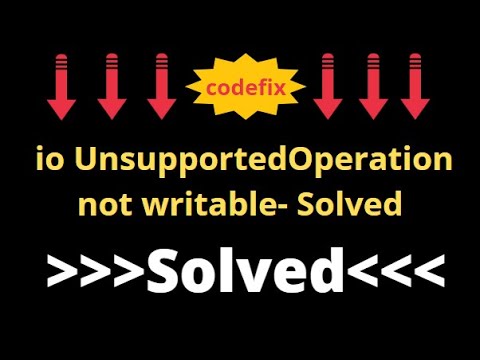
Found 47 images related to io unsupportedoperation not readable theme
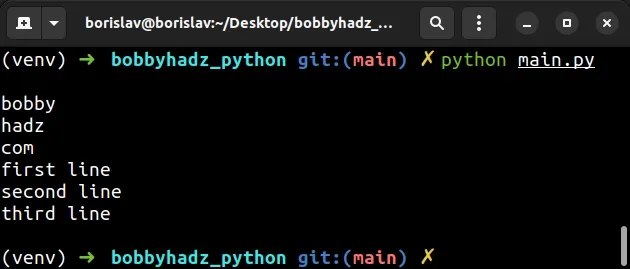



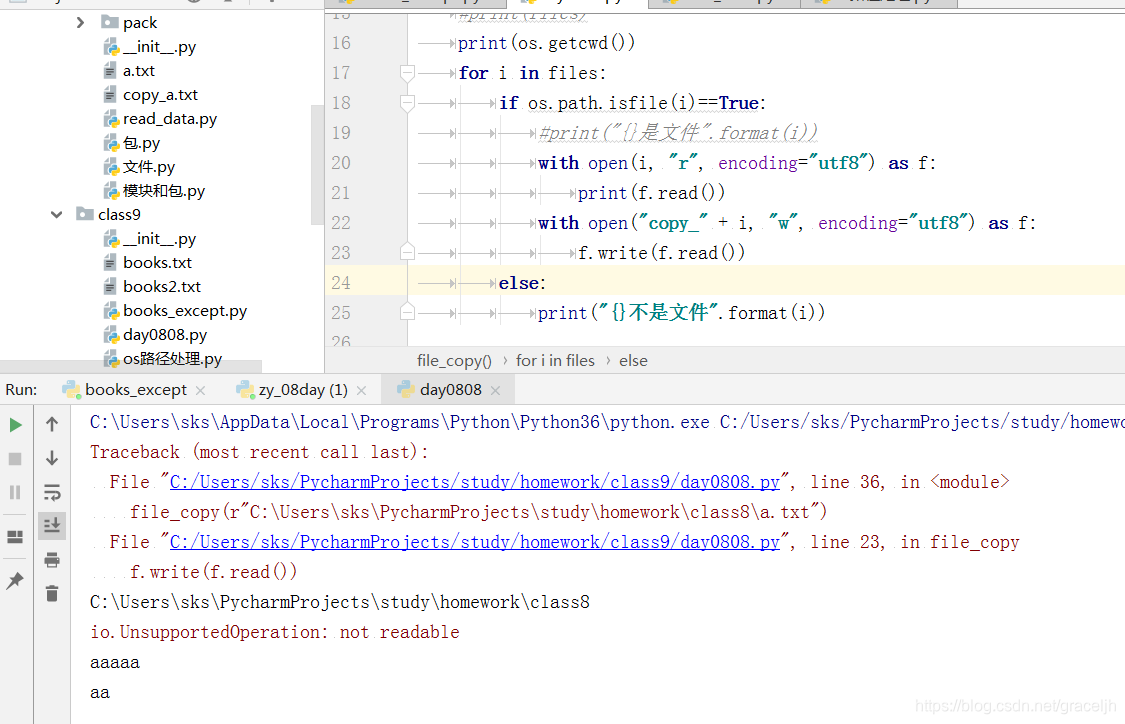
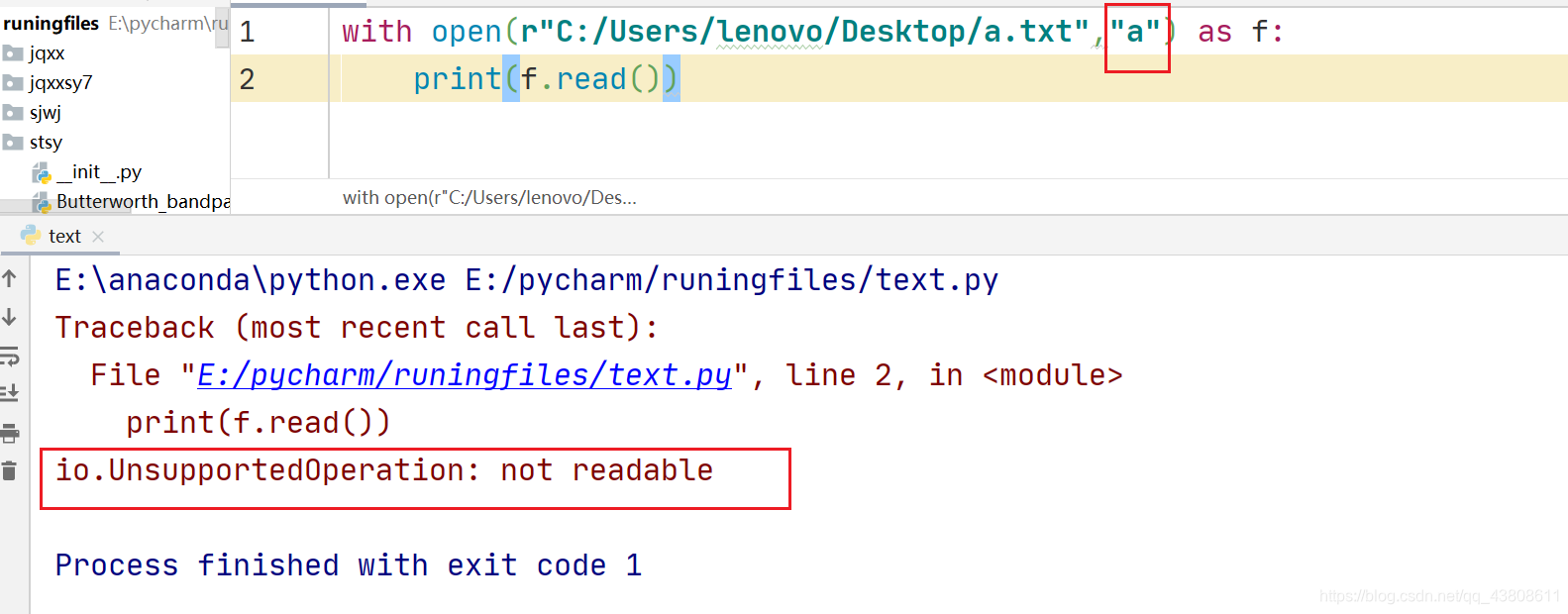

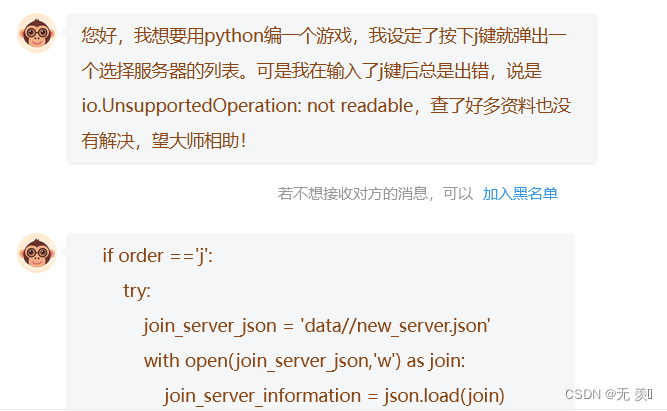
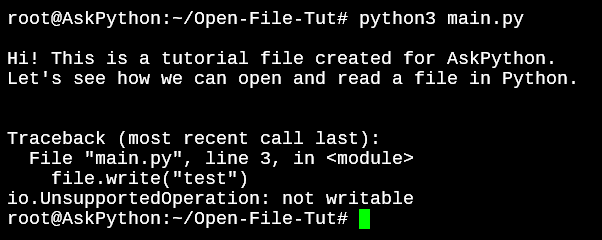
Article link: io unsupportedoperation not readable.
Learn more about the topic io unsupportedoperation not readable.
- Python error message io.UnsupportedOperation: not readable
- [Fixed] “io.unsupportedoperation not readable” Error
- io.UnsupportedOperation: not readable/writable Python Error
- io.UnsupportedOperation: not readable – Python-forum.io
- Python error message io.UnsupportedOperation: not readable
- [Fixed] “io.unsupportedoperation not readable” Error
- Python error message io.UnsupportedOperation: not readable
- io.UnsupportedOperation: not readable #427 – pytorch/text
- Help me understand error unsupported operation: not readable
- Python error message io.UnsupportedOperation: not readable
See more: nhanvietluanvan.com/luat-hoc